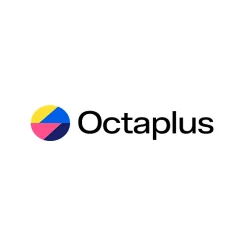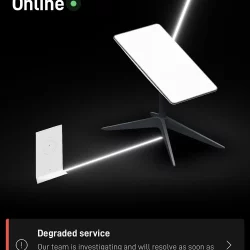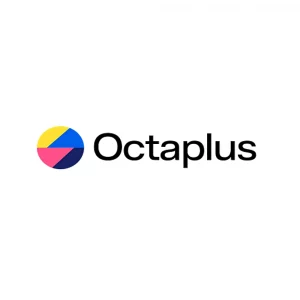ITS Technology Talks Fair Fibre Optic Marketing and Broadband Rollouts
2. ITS recently reached an agreement to help the Fibre GarDen (Digital Dales) scheme build a new fibre optic (FTTP) based superfast broadband network to connect rural homes in Garsdale and Dentdale (Cumbria, England). Can you give us an update on the status of this project?
ANSWER:
The Funding is now in place to start the project, the last part of the jigsaw was attracting the Defra funding [Rural Community Broadband Fund]. Working with Fibre GarDen, ITS played a major role in attracting investment and has put in funds itself to ensure the project goes ahead.
Detailed project plans are now well underway and the build will start in October 2014. The infrastructure will be rolled out over 12 months and the first residents can expect to be connected by Christmas 2014. Residents in the Garsdale and Dentdale are committed to this service as is reflected by higher than expected sign up.
By utilising GPON technology, ITS will be able to provide fibre to the premise (FTTH/FTTP) connectivity which will give customers 100Mbps services from day one. Business customers will have the option of a dedicated 1Gbps fibre service. This will be symmetrical with ultra-low latency.
Two basic packages will be available: basic broadband connectivity – symmetrical 30Mbs with 40Gb per month datacap. Enhanced broadband capability – symmetrical 100Mbs with no datacap. Both services will be offered as a retail product by Fibre GarDen for users requiring a local, straightforward service; and as a wholesale product for ISPs wishing to offer enhanced services.
ISPreview Editors Note: Some more details on the Fibre GarDen project and packages can be found here.
3. What kinds of physical, administrative and financial challenges are involved with fibre optic developments in rural areas, such as the Fibre GarDen scheme?
ANSWER:
Designing, building and part funding a landmark project of this nature is not easy. The demanding physical environment and terrain creates tough challenges, and given the majority of this area is within protected areas, also creates interesting engineering barriers. Working as an embedded part of the community to deliver this project is the key to success and we are thrilled with the local support this project has retained.
4. Do you agree with those who suggest that the Government would do better to scrap their expensive HS2 rail scheme and instead use some of the billions saved to reinvest into building a truly national UK fibre optic (FTTH/P/B) network (please explain your answer)?
ANSWER:
Investment in a wide variety of key infrastructure improvements – road, rail, communications etc – is the key to the long term viability and sustainability of the UK. In order to compete on a global basis and maintain a competitive advantage, it is important to continue to invest on both a regional and national basis.
ITS is investing heavily to build network infrastructure in key locations around the UK which have been underserved by the larger providers for many years. We cannot only rely on the public sector for investment. ITS’ partnership with Hammersmith and Fulham Council is a good example of the public and private sector coming together to invest in a shared vision for the future growth of the economy.
5. ITS recently signed a new deal with Fluidata to make use of their Service Exchange Platform (SEP), which allows ISPs to “accept, provision and deliver customer orders across additional infrastructure provider networks” via a special aggregated open access wholesale network that connects to more than 60 other ISPs. Can you explain more about what your plans are for SEP and how you envisage it being used?
ANSWER:
One of the major concerns raised about ‘alternative’ next generation networks is their ability to attract a range of ISPs in order to generate competition and stimulate demand. This is mainly due to the challenge (and cost) for ISPs of connecting to a number of different networks with different operating systems, compared with connecting through one (BT Wholesale).
Fluidata is one of the first organisations to crack this challenge, by providing a common platform for ISPs on one side and different networks on the other, thus dealing with the integration for all parties. ITS is committed to providing Open Access networks, where wholesale services are offered to any ISP. Fluidata’s SEP allows this to happen easily and effectively as well as lowering costs for ITS and the ISP; savings that can ultimately be passed on to the consumer.
6. The Government’s £100m Broadband Connection Vouchers scheme, which offers grants worth up to £3,000 to help small and medium sized businesses install a superfast broadband (30Mbps+) service in 22 cities across the United Kingdom, has recently come in for criticism (here and here) due to low uptake (only about 4% of the £100m fund had been drawn down by July 2014).
What do you think is the problem and, if you had the power, how would you go about improving the voucher scheme in order to boost uptake and interest?
ANSWER:
I really welcome the BDUK voucher scheme and we are thrilled that ITS is seeing some real successes in several cities including Manchester and Derby.
I would like to see the scheme extended to more cities around the UK and also the April 2015 deadline extended. If the funding available is £100m, let’s ensure as many SMEs can leverage the investment as possible and in the least bureaucratic way possible.
I feel the low uptake is due in no small part to the complex grant application process and how the suppliers have gone to market with the scheme. As vendors, we have to be creative, both technically and commercially, and above all make it easy for valued prospects to do business with us. Upgrading business broadband just to stream, download, upload, and send and receive emails quicker is too limiting. Business owners need to be educated on the major benefits that a superfast network can deliver such as cloud-based solutions like Office365, Lync, SharePoint and Hosted Voice solutions. Once these benefits are known and qualified, then the cost of the service is put into context.
7. Ofcom’s recent Fixed Access Market Review (FAMR) made a number of changes but largely and understandably chose to leave FTTH/P providers alone until the market for ultrafast broadband has had a chance to develop.
Do you think this was the right decision and, aside from fibre services, are there any areas that you wish Ofcom had done more to tackle during their review?
ANSWER:
The FTTH/P market is still emerging in the UK, having been hampered by the pervasive drive to use FTTC, which can only be seen as an interim solution, given the need for a 21st century digital transformational infrastructure.
Ofcom was right that the market for ultrafast broadband needs more time to develop, however, it is doing so at a rapid pace now that more cities, towns and communities are realising there are alternatives to ‘waiting for BT or Virgin’.
ITS is very encouraged by Ofcom’s decision to include research on all alternative non-major NGA providers in the Infrastructure Report due out in late October. This will give the market and consumers real insight into the options available to them, and how alternative networks are thriving in the UK.
8. The advertising watchdog has allowed hybrid-fibre and cable ISPs to call themselves “fibre optic” providers, despite the fact that true fibre optic technologies (FTTH/P) are often capable of significantly faster speeds than hybrid DOCSIS/FTTC style solutions. Where do you stand on the seemingly endless debate over how “fibre broadband” products are marketed today?
ANSWER:
ITS has many thousands of end-users across its hybrid network (including fixed wireless) and the feedback we receive is “I don’t mind what we are connected to, as long as the service is robust, secure, scalable, cost effective and comes with a great service level agreement”.
I do feel that suppliers should be more honest and transparent, not only about the technology they deploy, but also with regard to pricing policies and lead times. The end-user is more tech savvy and commercially aware than they are given credit for. Fixed and predictable cost of ownership is the key, and if this can be achieved with a lower capital cost of entry, so much the better.
9. Anything else you’d like to add Roy?
ANSWER:
Network technologies are continuing to converge, mobility is growing fast, online collaboration to improve efficiency and effectiveness of companies is also being adopted at a rate of knots. With Office 365 and the cloud being Microsoft’s core strategy, high speed hybrid networks are going to become even more important. Working with a vendor who can architect, plan, deliver and support an end-to-end customer experience which can demonstrate tangible business benefits is going to be increasingly sought after.
Digital, social and financial inclusion should also not be overlooked. Many sheltered and social housing providers are now starting to turn their attention to delivering internet access as part of their standard service offering to tenants. These types of services are enabling tenants to access information to improve their health and wellbeing online and reduce unnecessary visits to GP’s surgeries; get access to government services (Universal Credit) online; find employment online; access training online and develop new skills; save money online; feel less isolated; use digital channels to communicate e.g. email; essentially changing their lives.
End.
Naturally ISPreview.co.uk would like to thank Roy for agreeing to take part in our interview and for his insight into the wider market.
Mark is a professional technology writer, IT consultant and computer engineer from Dorset (England), he also founded ISPreview in 1999 and enjoys analysing the latest telecoms and broadband developments. Find me on X (Twitter), Mastodon, Facebook and Linkedin.
« UK ISP PlusNet Gifts GBP75 to New Unlimited Broadband Subscribers
Latest UK ISP News
- FTTP (5572)
- BT (3526)
- Politics (2549)
- Openreach (2308)
- Business (2279)
- Building Digital UK (2250)
- FTTC (2049)
- Mobile Broadband (1987)
- Statistics (1796)
- 4G (1676)
- Virgin Media (1634)
- Ofcom Regulation (1472)
- Fibre Optic (1405)
- Wireless Internet (1399)
- FTTH (1382)





















































Comments are closed